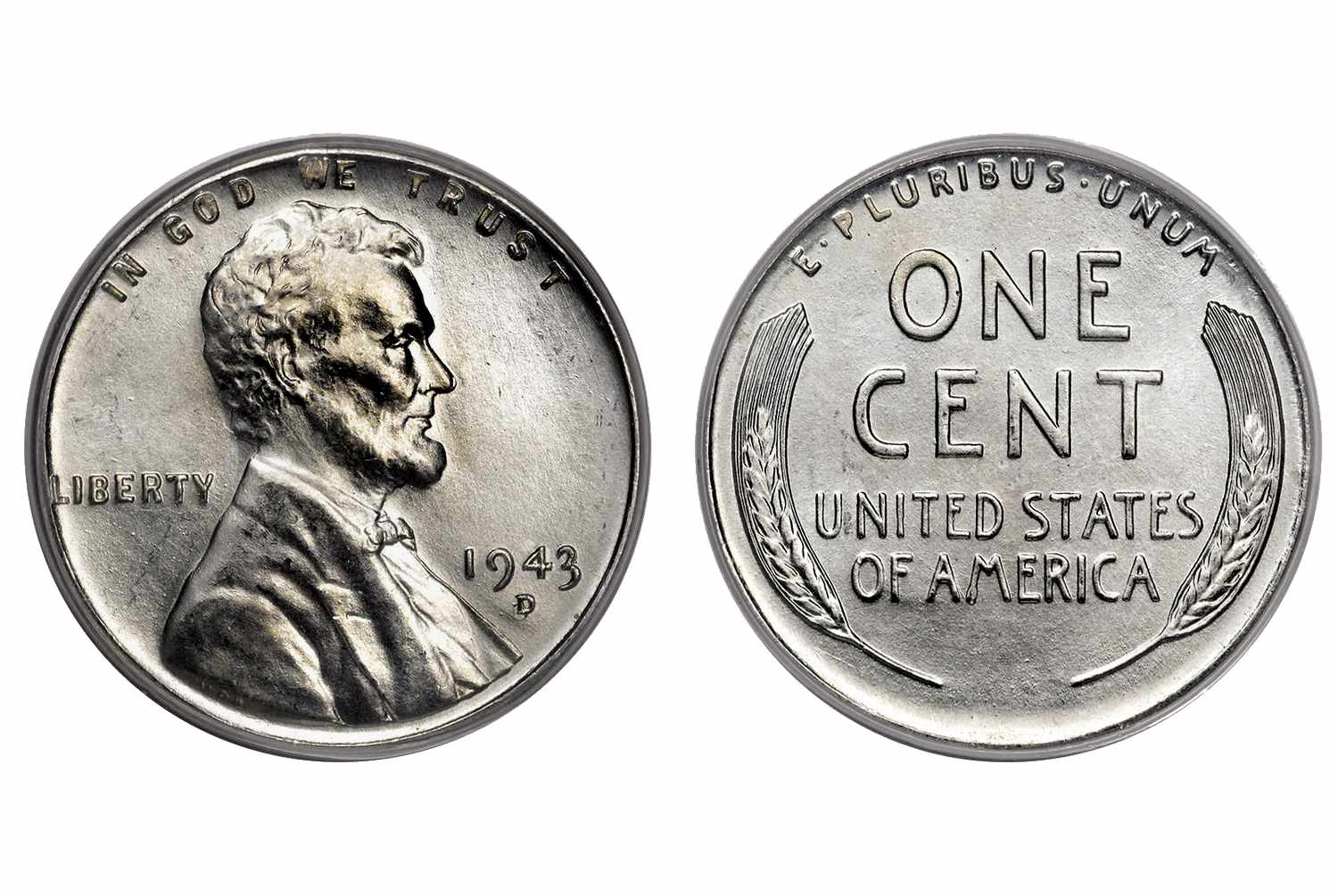In the world of numismatics, certain coins stand out not only for their historical significance but also for their rarity and unique composition. The 1943 steel penny is one such coin that has captured the fascination of collectors and enthusiasts alike. In this article, we will explore the intriguing history behind the 1943 steel penny, its unique composition, and delve into the factors that contribute to its value in the numismatic market.
Table of Contents
ToggleThe Historical Context:
The year 1943 marked a crucial period in history – the midst of World War II. Copper, a vital metal used in coin production, was in high demand for the war effort. As a result, the United States Mint made a significant decision to preserve copper for military applications and shifted the composition of the one-cent coin to steel. This led to the creation of the 1943 steel penny, a coin with a unique silver appearance due to its zinc coating.
Composition and Characteristics:
The 1943 steel penny was composed of a zinc-coated steel alloy, making it distinct from the traditional bronze composition of earlier pennies. The steel core was prone to rust, and the coin’s silver appearance was the result of a thin layer of zinc coating applied to protect it from corrosion. Despite these protective measures, many 1943 steel pennies did succumb to rust over time, adding to the coin’s charm and historical appeal.
The Rarity Factor:
While the 1943 steel penny was mass-produced to meet the demands of circulating currency during the war, the coins faced several challenges that contribute to their rarity today. One notable issue was the rapid corrosion of the steel core, leading to a higher rate of coin deterioration compared to their bronze counterparts. As a result, finding well-preserved 1943 steel pennies has become a challenging task for collectors.
Minting Varieties:
There are three mints that produced the 1943 steel penny – Philadelphia, Denver, and San Francisco. Each mint had its own mintmark: “P” for Philadelphia, “D” for Denver, and “S” for San Francisco. The mintmark is located on the reverse side of the coin, above the “E” in “ONE.” Collectors often pay special attention to mintmarks, as they can significantly impact a coin’s rarity and value.
Factors Influencing Value:
Several factors contribute to determining the value of a 1943 steel penny:
- Condition: As with any coin, the condition plays a pivotal role in its value. Well-preserved, uncirculated specimens with minimal rust or corrosion fetch higher prices in the market.
- Mintmark and Mint Location: The mint location and mintmark on the coin influence its rarity. Pennies minted in San Francisco are generally scarcer than those from Philadelphia or Denver, and coins with mintmarks are often more sought after by collectors.
- Rarity: Despite being produced in large quantities, the survival rate of pristine 1943 steel pennies is relatively low. The combination of wartime usage and the steel core’s vulnerability to rust contributes to their rarity.
- Authentication: Verifying the authenticity of a 1943 steel penny is crucial. Counterfeits and altered coins can deceive collectors, so obtaining certification from reputable numismatic organizations enhances the coin’s value.
Current Market Trends:
The market for 1943 steel pennies has remained strong over the years, with collectors and investors alike seeking these coins for their historical significance and scarcity. Auctions, coin shows, and online platforms serve as avenues for enthusiasts to buy and sell these coins. Prices can vary widely based on the factors mentioned earlier, and the condition of the coin often dictates its final selling price.
Recent Trends and Discoveries:
In recent years, there have been noteworthy discoveries of well-preserved 1943 steel pennies, creating a stir in the numismatic community. Some of these discoveries include coins that were hoarded or stored away shortly after minting, preserving their condition for decades. These findings have added new specimens to the market, influencing trends in pricing and demand.
Tips for Collectors:
For collectors interested in acquiring a 1943 steel penny, it’s essential to keep the following tips in mind:
- Authentication: Purchase coins from reputable dealers or seek certification from recognized numismatic organizations to ensure the coin’s authenticity.
- Condition Matters: Aim for coins in the best possible condition. While some collectors appreciate the natural patina of a slightly worn coin, pristine specimens tend to command higher prices.
- Research Mintmarks: Be aware of the mintmarks and their impact on rarity. San Francisco minted coins are generally scarcer and may carry a premium.
- Market Trends: Stay informed about current market trends and recent auction results to make informed decisions about buying or selling.
Conclusion:
The 1943 steel penny stands as a testament to a critical period in history and the adaptability of the United States Mint during wartime. Its unique composition, coupled with the challenges it faced in terms of corrosion, contributes to its allure among collectors. As with any collectible, the value of the 1943 steel penny is subject to market fluctuations, but its historical significance ensures a lasting appeal for numismatists around the world. Whether you’re a seasoned collector or a newcomer to the world of coins, the 1943 steel penny is a fascinating piece that invites exploration into the intersection of history, metal composition, and rarity.
